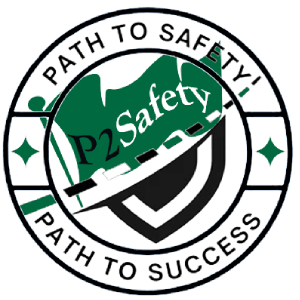CIT 50 Flashcards

1. The collective learning
The collective learning is likely to take place a bit later, in conversation – in the kitchen, the hallway or the parking lot. Collective learning happens when a community adapts to new information by incorporating it into a narrative, creating some practical knowledge by which it will be guided in choosing its behaviours going forward.

2. Dynamic learning
Dynamic learning refers to a learning environment in which the student is not just a recipient: he/she participates, creates, communicates, makes progress. Which is perfectly in line with the interactivity of online education. Even within eLearning, however, you can find different ways to create a dynamic environment.

3. explanatory case study
The purpose of an explanatory case study is to better show the data and description of a casual investigation.

4. Collective case study’s
Collective case study’s purpose is to show the detail of how a group of individuals in a manner that shows all the data concisely.

4. descriptive case study
The purpose of a descriptive case study is to be able to compare the new gatherings to the pre-existing theory

6. impactful training
Regularly providing impactful training and development opportunities improves employee motivation and job satisfaction, and opens up opportunities for advancement and promotion.

7. Visual (spatial)
Visual (spatial): You prefer using pictures, images, and spatial understanding.

8. Aural (auditory-musical)
Aural (auditory-musical): You prefer using sound and music.

9. Verbal (linguistic)
Verbal (linguistic): You prefer using words, both in speech and writing.

10. Kinesthetic learners
How to recognize kinesthetic learners in your class

11. A pilot programs
A pilot program, also called a feasibility study or experimental trial, is a small-scale, short-term experiment that helps an organization learn how a large-scale project might work in practice.

12. A subject-matter expert (SME)
A subject-matter expert (SME) is a person who has accumulated great knowledge in a particular field or topic and this level of knowledge is demonstrated by the person's degree, licensure, and/or through years of professional experience with the subject

13. Blended learning
Blended learning, also known as technology-mediated instruction, web-enhanced instruction, or mixed-mode instruction, is an approach to education that combines online educational materials and opportunities for interaction online with physical place-based classroom methods

14. Distributed learning
Distributed learning is an instructional model that allows instructor, students, and content to be located in different, noncentralized locations so that instruction and learning can occur independent of time and place.

15. Educational technology
Educational technology (commonly abbreviated as edutech, or edtech) is the combined use of computer hardware, software, and educational theory and practice to facilitate learning

16. A lesson plan
A lesson plan is a teacher's detailed description of the course of instruction or "learning trajectory" for a lesson. A daily lesson plan is developed by a teacher to guide class learning. Details will vary depending on the preference of the teacher, subject being covered, and the needs of the students. There may be requirements mandated by the school system regarding the plan.

17. Training
Training may be viewed as related to immediate changes in organizational effectiveness via organized instruction, while development is related to the progress of longer-term organizational and employee goals.

18. A checklist
A checklist is a type of job aid used in repetitive tasks to reduce failure by compensating for potential limits of human memory and attention. It helps to ensure consistency and completeness in carrying out a task.

19. A training manual
A training manual may form an important part of a formal training program. For example, it may help ensure consistency in presentation of content. It may also ensure that all training information on skills, processes, and other information necessary to perform tasks is together in one place.

20. transferable skills
Also known as “universal” or “portable” skills, transferable skills are useful across job roles and industries. For example, communication and time management are transferable skills because they are applicable in numerous job roles, from customer service to front-line management.

21. A test / assessment
A test is an assessment, exam, or evaluation instrument used to gauge an individual’s performance. In corporate training, tests may be administered pre- or post-training to gauge learners’ knowledge and expertise.

22. Self-awareness
Self-awareness is the ability to see oneself objectively through reflective introspection. Self-aware leaders can better recognize their strengths and weaknesses, enabling them to make more effective business decisions.

23. Social learning
Social learning is a form of synchronous or asynchronous online learning that occurs in a social setting, most recently through social media or social learning platforms, where users can interact, collaborate and communicate on the learning topic. See also: Collaborative Learning.

24. Reskilling
Reskilling is the process of developing and training employees in order to fulfil job functions and tasks outside of their current role and existing skill set.

25. Role-play, or role-playing
Role-play, or role-playing, allows a learner to assume the role or tasks of a job by practicing or simulating real working conditions. The objective of role-playing is to learn, improve or develop upon the skills or competencies necessary for a specific position.

26. Proficiency
Proficiency refers to the state of being competent or advanced in a skill, role or job.

27. Pedagogy
Pedagogy is the art or science of education, which often pertains to educating youth.

28. Outskilling
Outskilling refers to retraining employees with the skills they need to be competitive in the job market. Some organizations outskill employees amid layoffs to help them find new roles.

29. Microlearning
Microlearning is training content delivered in “bite-sized” pieces, or short, specific bursts. This content is used in isolation or as part of a series of microlearning content to teach a skill or behaviour.

30. A learning culture
A learning culture is a set of organizational practices, values and processes within a workplace. The goal of a learning culture is to encourage the continuous growth of learning and development and to improve the performance of individual employees and, therefore, the entire organization.

31. A learning objective
A learning objective is a statement that tells your students what they will learn by the end of your lesson or course. It’s like a promise you’re making to your students about what they’ll get

32. A course description
A course description is a brief summary of your subject, course content, and learning objectives. Potential learners will read your course description and then make an assessment as to whether or not yours is the right course for them. A course description should run no longer than one hundred words, and be written in clear, focused language

33. A performance reviews
A performance review, also called a performance evaluation or performance appraisal, is an assessment where supervisors review an employee’s performance at work. Throughout the performance review, a supervisor will identify employee’s strengths and weaknesses, set goals and offer feedback for future performance.

34. A competency model
A competency model is a guideline developed by a Human Resource department that sets out the specific skills, knowledge and behavioural requirements that enable an employee to perform their job successfully.

35. Core competencies
Core competencies include the baseline skills required by the organization for all employees; these are the basic things that employees must fulfill. This will vary from company to company, as it depends on the values, philosophy and goals of each organization, but can include basic requirements like communication skills or teamwork. Most jobs require a basic element of being able to work with other people to some degree.

36. Functional competencies
Functional competencies are job-specific skills and behaviors that are unique for each role. For example, a competency for a restaurant waiter may be the ability to effectively handle customer complaints, where a competency for an accountant may be the ability to analyze a specific type of financial data in order to prepare reports.

37. Pedagogy
Pedagogy is the art or science of education, which often pertains to educating youth.

38. Leadership competencies
Leadership competencies are often used for supervisory and management related roles, although can be applied to any job position that requires an employee to lead others. They include leadership skills and behaviours like decision-making abilities.

39. Performance Appraisal
Performance Appraisal – Competency models provide the framework needed to properly assess employees during a performance review; both the employee and employer have a clearly defined list of behaviours and skills to work from.

40. A formalized remediation plans
A formalized remediation plan provides both the trainee and program specific and transparent expectations for trainee improvement and a timeline for completion. Remediation can evolve into Probation, if necessary.

41. The Kirkpatrick model
The Kirkpatrick model, also known as Kirkpatrick’s Four Levels of Training Evaluation, is a key tool for evaluating the efficacy of training within an organization. This model is globally recognized as one of the most effective evaluations of training.

42. The Kirkpatrick model Consist of
The Kirkpatrick model consists of 4 levels: Reaction, learning, behaviour, and results.

43. Participant feedback
It’s essential that you know how effective your training is. Participant feedback can help you measure the effectiveness of your courses, improve them, and plan future training.

44. Pre-training - Participant feedback
Pre-training: to inform how you run the training, how you deliver it, and what useful and relevant content it should have. It will also tell you about participants’ existing knowledge, expectations, needs, and wants.

45. Post-training - Participant feedback
Post-training: these help you take a long, hard look at the outcomes of your training, making sure it fulfilled your goals and offered value for money.

46. Formative Assessment
Formative Assessment refers to a variety of assessment procedures that provides the required information,to adjust teaching,during the learning process

47. summative assessments
summative assessments are usually applied at the end of a period of instruction to measure the outcome of student learning. They are high stakes for all concerned, most obviously for the learners who are being judged but also in the sense that the data may be used to drive course improvement, to assess teaching effectiveness, and for program-level assessments such as accreditation.

48. Job performance
Job performance relates to how individuals perform in their job duties. In addition to training and natural ability (like dexterity or an inherent skill with numbers), job performance is impacted by workplace environment factors including physically demanding tasks, employee morale, stress levels, and working extended hours.

49. on-the-job training
on-the-job training allows companies to find the right people for the job because they show capability during the training process.

50. Student learning outcomes (SLOs
Typically, Student learning outcomes (SLOs) describe the knowledge, skills, attitudes, behaviours or values students should be able to demonstrate at the end of a program of study.




